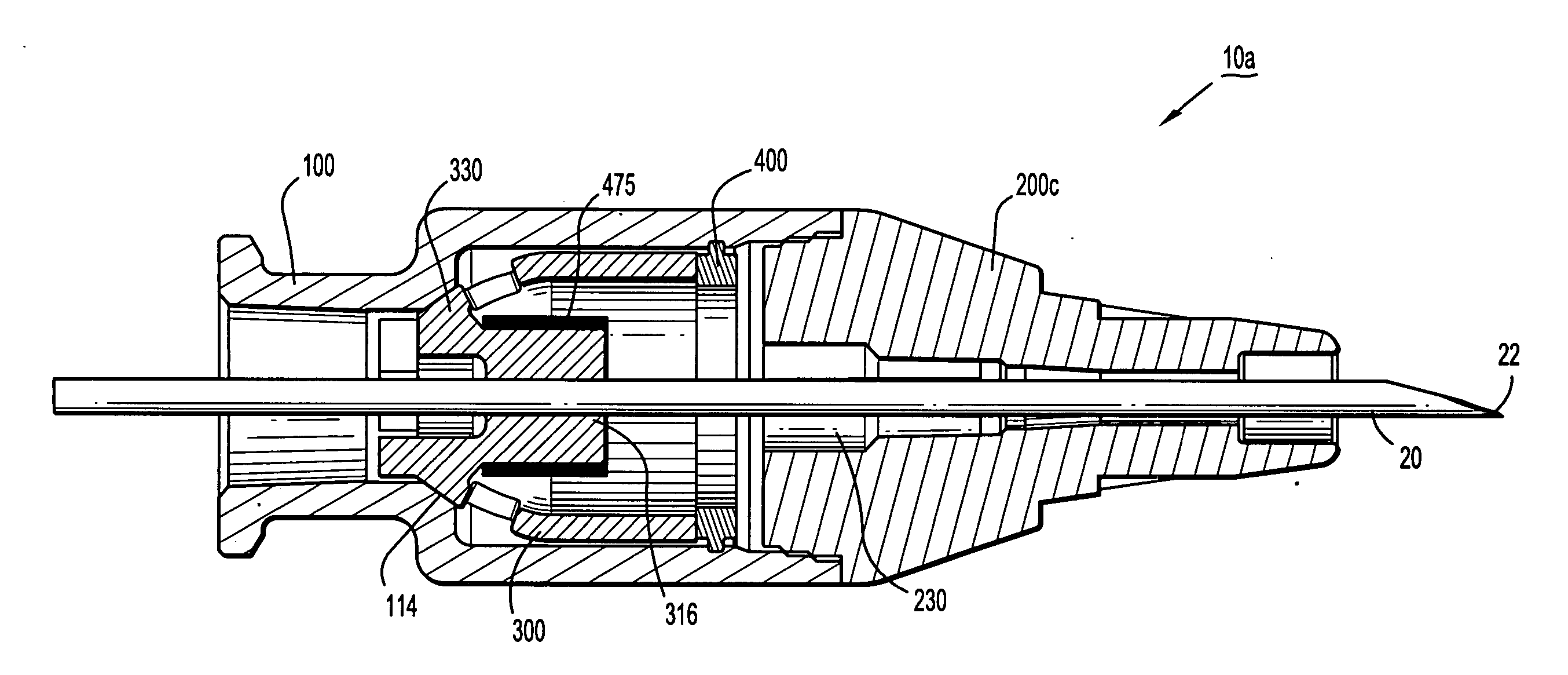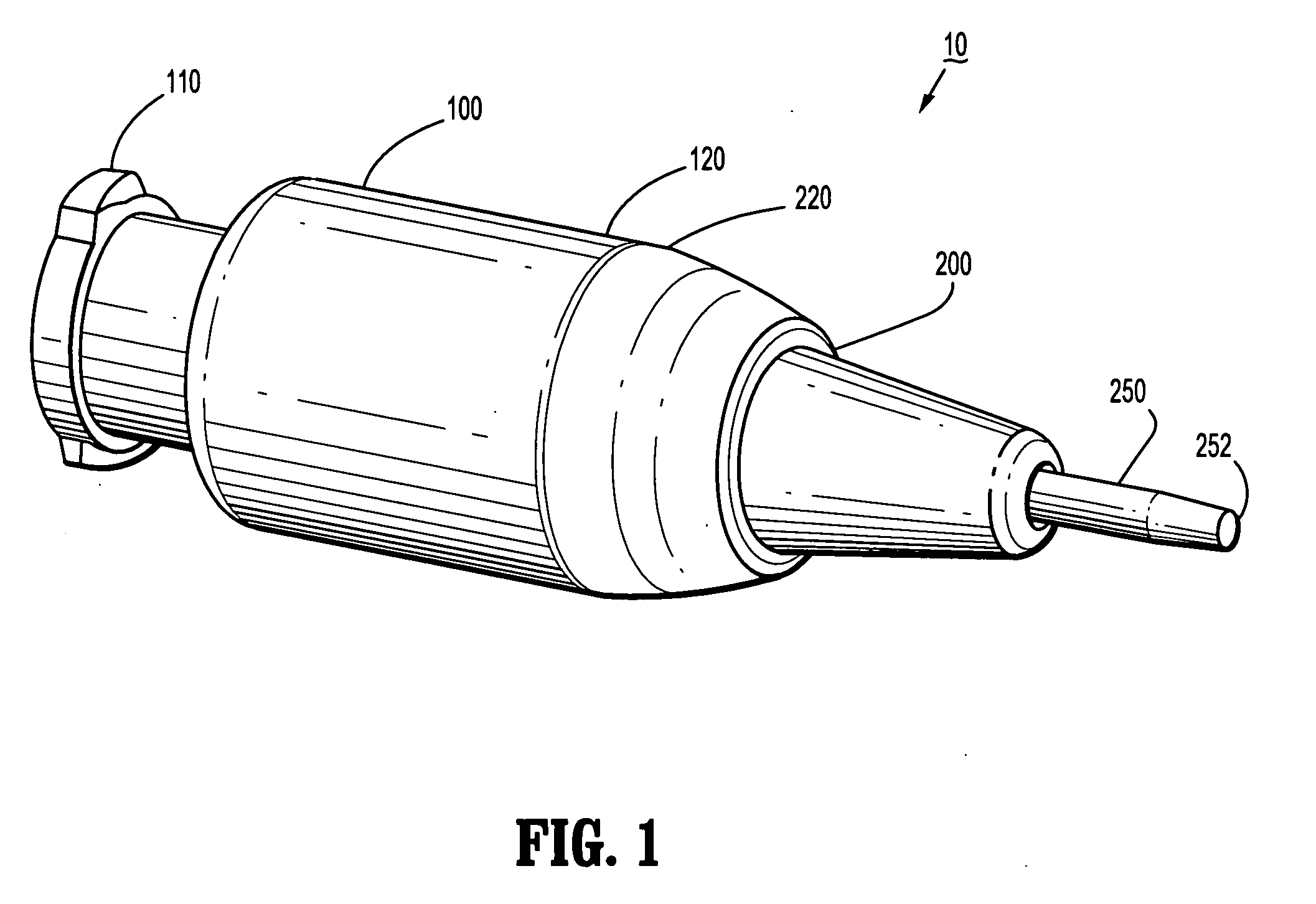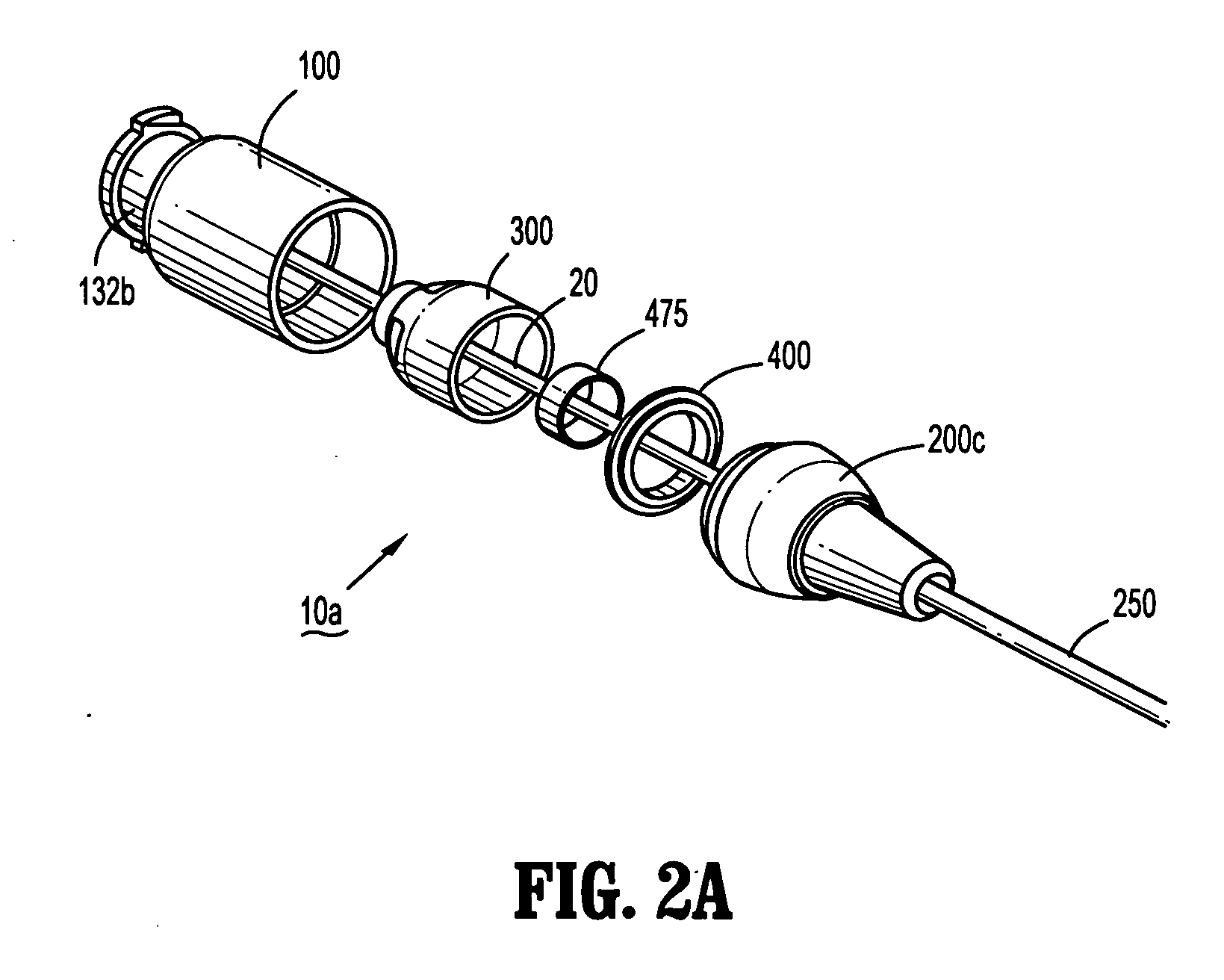IV catheter with in-line valve and methods related thereto
a technology of iv catheter and in-line valve, which is applied in the field of medical infusion or access devices, can solve the problems of increased risk of infection, significant discomfort for patients, and ineffective efforts
- Summary
- Abstract
- Description
- Claims
- Application Information
AI Technical Summary
Benefits of technology
Problems solved by technology
Method used
Image
Examples
Embodiment Construction
[0084] Referring now to the various figures of the drawings wherein like reference characters refer to like parts, there is shown in FIG. 1 an axonometric view of an in-line valve IV catheter assembly 10, which is a type of vascular access device, that is of the catheter-over-stylet / sharp / cannula type of IV catheter (Note: The catheter length is represented shorter than usual for simplicity). The stylet / sharp / cannula 20 (e.g., see FIGS. 2A,I) is inserted through the IV catheter assembly 10 or IV catheter so that the piercing end of the stylet / sharp / cannula 20 extends out of the open end 252 of the catheter tubular member 250. In this way, and as known to those skilled in the art, a user inserts the piercing end of the stylet / sharp / cannula 20 through the skin and subcutaneous tissue of the body so that the open end 252 of the tubular member 250 of the IV catheter assembly 10 is disposed within the blood vessel (e.g., vein or artery) of the patient.
[0085] Referring now to FIG. 1, the...
PUM
 Login to View More
Login to View More Abstract
Description
Claims
Application Information
 Login to View More
Login to View More - R&D
- Intellectual Property
- Life Sciences
- Materials
- Tech Scout
- Unparalleled Data Quality
- Higher Quality Content
- 60% Fewer Hallucinations
Browse by: Latest US Patents, China's latest patents, Technical Efficacy Thesaurus, Application Domain, Technology Topic, Popular Technical Reports.
© 2025 PatSnap. All rights reserved.Legal|Privacy policy|Modern Slavery Act Transparency Statement|Sitemap|About US| Contact US: help@patsnap.com



